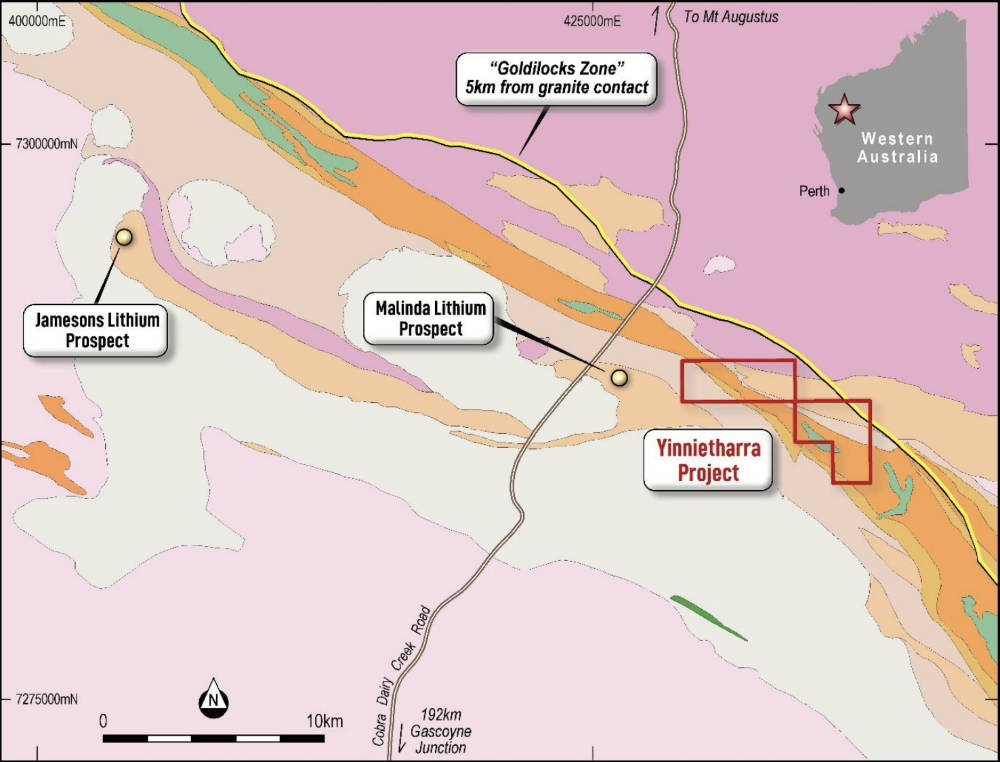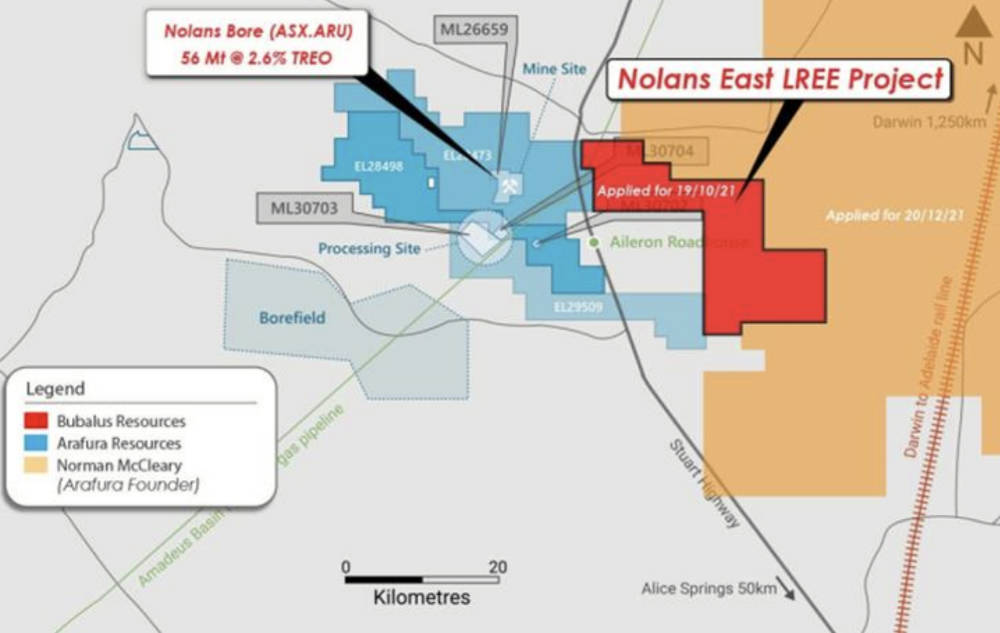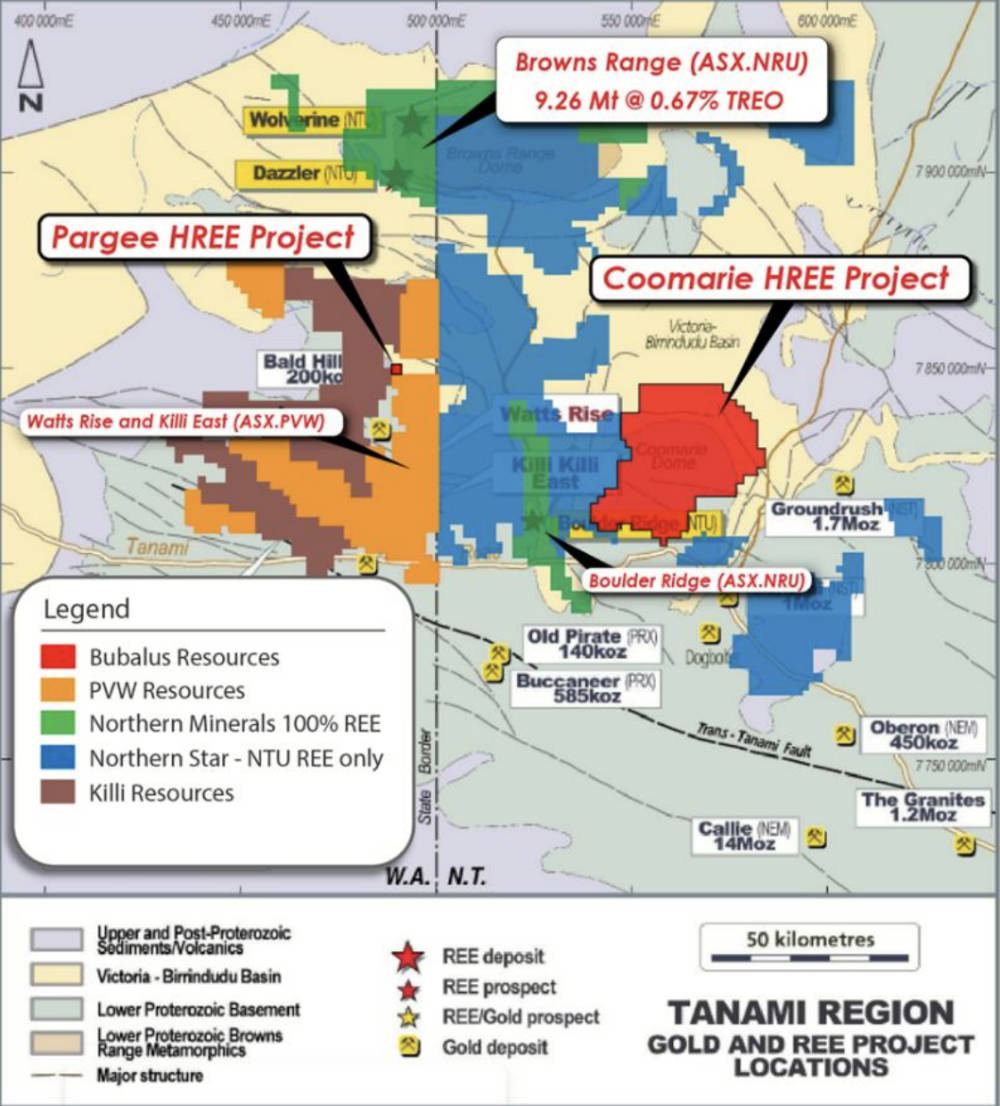Tightly held, cashed up and a stone’s throw from Delta Lithium – Bubalus Resources is poised to catapult ahead

Bubalus has a busy schedule ahead as it pursues lithium and REE exploration at its projects in WA and the NT. Pic: Jason Edwards via Getty Images.
- Bubalus Resources has a tight capital structure, more than $3.6m in cash and projects close to significant, third-party projects
- Yinnietharra is just 2km from Delta Lithium’s Malinda lithium prospect and is undergoing initial mapping and sampling
- Extensive soil sampling work to follow to define drill targets for drilling potentially before the end of this year or early next year
- Drilling also planned for its Nolans East REE project in the NT pending heritage agreements
Special Report: Cashed-up explorers with a tight capital structure and projects with proximity to not one but several significant critical mineral projects are far from common, so for Bubalus Resources to possess all these qualities certainly marks it as a standout.
But why exactly are these admirable qualities?
Being cashed up means that said junior has the wherewithal to fund its exploration plans and Bubalus Resources (ASX:BUS) has ~$3.68m as at the end of the September quarter. That’s more than enough to keep its operations going for quite some time to come.
Incidentally, the company has a market capitalisation of $5.63m, which works out to an enterprise value of $1.95m and a correspondingly low EV/market cap ratio that is valued by more risk-averse investors.
Having a tight capital structure means there are relatively few shares on offer, so shareholders enjoy minimal dilution of capital (as each share represents a proportionally large stake in the company) and a greater level of leverage to exploration successes.
With just ~36.3 million shares on issue, BUS certainly falls into this category.
Lithium, rare earths exposure positions Bubalus for the future
As for its projects, the company’s attention is focused primarily on the recently acquired Yinnietharra lithium project in WA while its Nolan’s East rare earths (REE) project in the NT is awaiting key clearances before taking equal first placement and the Coomarie REE project holding a secondary but still significant position.

Yinnietharra consists of tenements E09/2724 and E09/2725 that sit 900km north of Perth and 270km east of Carnarvon.
Its real claim to fame, though, is being just a stone’s throw away from Delta Lithium’s (ASX:DLI) Malinda prospect.
DLI has defined a significant pegmatite swarm comprising six well-defined mineralised pegmatites at Malinda with drilling identifying a ‘Lithium Mile’ of two major parallel ore zones across 1.6km of strike and a depth of 350m that remains open down plunge.
Metallurgical testing has also successfully produced high grade spodumene concentrates of up to 6.4% Li2O.
Speaking to Stockhead, non-executive director Scott Deakin said Yinnietharra first came to the company’s attention when it started looking at other projects that it could work on when permitting at Nolans East stalled drilling progress.
“We were running our REE projects in the Northern Territory and working those up systematically and had reached the point where Nolans East, is at a drill ready stage, before we were hamstrung by heritage processes and engagement to get on the ground.
“It gave us cause for looking at other potential projects that we could work in conjunction with and one was brought to our attention in the Yinnietharra region.
“We reviewed a couple of projects in the vicinity, when the Yinnietharra project subsequently arose through the same vendor group that had initially vended the Malinda prospect into Red Dirt, which is now Delta Lithium. During due diligence, we found genuine prospectivity through an analogous geological setting in which Malinda is hosted, along with the proximity to Delta and trend of known spodumene bearing pegmatites from their ground in our direction.
“So we executed the agreement and have recently been on the ground, with mapping and rock chip sampling and will look to commence a broader soils program imminently, which is the key indicator to help vector in on drill targets, given the weathering profile of the pegmatites at surface.”
BUS is currently carrying out an initial mapping and sampling work to understand the geology and identify outcropping pegmatites that might be analogous to those seen at DLI’s ground with a view towards generating potential drill targets
This is being carried out in parallel with a geophysical and spectral review by Terra Resources to identify targets that will be followed up by ground truthing.
“We will be soon commencing an extensive systematic soils program with the view to generating some drill targets that we would like to either drill before the end of the year or first thing next year,” Deakin added.
“We have also started the process with the relevant heritage agreements and engagements to be in the position to be drill ready as soon as possible.”
BUS’ proximity to DLI also brings potential valuations to the fore.
While DLI has considerably more ground and is much further along the exploration-development axis, its market cap of $300m compared to BUS’ $5.6m provides a hint of the kind of value that successful exploration can unlock.
Nolans East waiting for its moment
While Yinnietharra is undoubtedly the focus of BUS’ attention, it has not forgotten its 380km2 Nolans East REE project just 15km east of Arafura Resources’ (ASX:ARU) high impact Nolans project that has received support from Hancock Prospecting in the form of a recent $60m cornerstone investment.
Nolans East is prospective for light REEs – in particular, the high value magnet REEs neodymium and praseodymium.

Exploration by the company at the underexplored project had identified anomalous REE trends at surface that warrant drilling while visual field mapping has indicated in situ anomalism that likely stemmed from a proximal source.
Likewise, its Coomarie Dome project – also in the NT – is believed to be a geological analogue to Northern Minerals’ (ASX:NTU) Browns Range REE deposit, granting BUS the opportunity to pursue the same “own the dome” strategy.
Browns Range is hosted on the margins of a granite dome intrusive where the unconformity between Gardiner Sandstone and Browns Range Metamorphics exists, while at Coomarie, whole rock grab samples have highlighted anomalous NdPr values on the periphery of the Coomarie Dome intrusive complex.
Desktop targeting has identified a number of structures which cross cut the domal contact and present priority target areas for initial ground exploration activities.

“There is a lot of geological upside with our projects in the NT,” Deakin said.
“A lot of the work has been done there so they are sitting there drill ready and as soon as we can get heritage agreements in place and surveys done, we will be looking to do work up there as well.
“Early next year, it wouldn’t be inconceivable for us be drilling in tight proximity across two projects (Yinnietharra and Nolans East) running in parallel.
“Across Coomarie, we are also engaged with Traditional Owners with a view to getting on the ground there.
“We have kept that project sitting there for the time being and waiting to go through the heritage agreements and get those in place and then we can hit the ground running with a soil sampling program and commence activities out there.
“We are going to be really active, we are not in the business of sitting on projects and stringing them along but rather are aiming to be a high impact explorer.
“This will be a high impact few months with a lot of upside and leverage for investors.”
This article was developed in collaboration with Bubalus Resources, a Stockhead advertiser at the time of publishing.
This article does not constitute financial product advice. You should consider obtaining independent advice before making any financial decisions.
Related Topics

UNLOCK INSIGHTS
Discover the untold stories of emerging ASX stocks.
Daily news and expert analysis, it's free to subscribe.
By proceeding, you confirm you understand that we handle personal information in accordance with our Privacy Policy.








